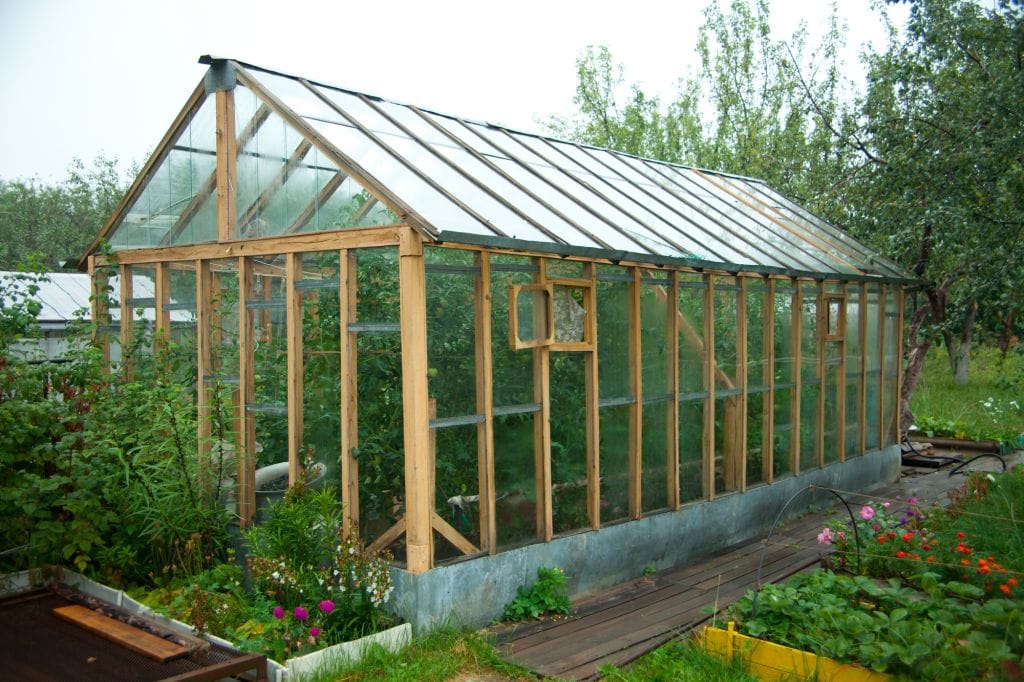Have you ever looked at your carport and wanted to make an excellent organic food growth area?
Whether you've pondered it or not, here's the good news: you can turn an unused space into a thriving garden in only a few months!
You may save a great deal of money by building your own conservatory in an existing garage, and it's not difficult to do. If you follow these procedures, you'll have an endless selection of raw herbs, vegetables, shallots, and tomatoes throughout the year.

It's All About the Proportion
A remodeled garage is ideal for a greenhouse because of its dimensions. You'll need enough space for the crops to reach their full potential while also giving yourself enough room to collect your harvests. You'll also require storage space for your gear and equipment.
Allow the Sun to Enter
Determine which wall on the southern part of your garage you'll dismantle or rearrange to let in maximum light. Because the north and east sides receive less solar gain, keep them essentially intact if they're in good shape.
Then, on the garage interior, use reflectors to bounce sunshine in from the south. This also lowers the cost of plastic covering and prevents wind penetration.
If you're replacing windows rather than tearing down a wall, choose repurposed panes to keep your project sustainable.
The Construction
If you reside in a snowy and cold area, your roof's pitching was most likely designed to handle that. If not, think whether you'd like to change the slope of the roof when you're rearranging it.
For all or part of the garage roof, use clear polycarbonate corrugated roof top panels. They're highly durable, let in 90% of natural light, and are simple to install. Walls should be framed around vents and fans. Don't be frightened to seek assistance!
The Tools
You'll need both. Most garages have power and many have access to water. In the wintertime, your greenhouse will be a pleasant 20 degrees, but in the spring, it will be in the mid to upper 30s, far too hot for most plants. Installing vents and fans will ensure that the inside of your greenhouse remains at a comfortable temperature throughout the year.
If you reside in a place with severe summer sun, such as a higher elevation, a misting system may be beneficial. If your garage does not have running water, you may either install piping or construct a rainwater harvesting system out of salvaged materials.
You're well on your way to keeping your garage greenhouse green all year. Good luck with your development!
Your garage door makes a great difference.
If you want to transform your garage into something different, you've probably considered the new garage door. When it relates to greenhouses, you might want to consider installing an insulated door or glass to let in more light.
Sometimes, artificial ain’t that bad
If there aren't many openings and a full-scale restoration isn't an option, artificial light sources can be installed to support healthy plants. There are many different types of grow lights available, and you can choose the ones that are best for your project.
Suspend them over the plants from the ceiling. If you want to save money, try turning off the lights throughout the day or restrict the amount of lighting, specifically if the plants get some light via the windows.
What Kinds of Plants Do You Have in Your Garage?
You're eager to get started on your garage paradise, but first do some research on what to produce. Some plants prefer certain temperatures or are designed to go dormant throughout the winter before starting to bloom in the spring.
Carrots, onions, beets, and parsnips are examples of roots and underground crops that can be grown in the winter. Kale, arugula, lettuce, fennel, and a variety of other leafy greens may all be grown in your garage to make a tasty and fresh meal. Cauliflower, asparagus, peas, and Brussels sprouts are also viable options for a carport garden.
Maintaining Warmth in Your Backyard Garden
You'll need to figure out the optimal temperature for the plants you've picked and modify accordingly to determine whether you'd like to heat or cool the space.
A thermometer should be available at any gardening or home renovation store, which you can keep in the carport and monitor on a regular schedule. You may need to add a fan to get some air flowing if the greenhouse gases are making the area too humid for your crops.
If you reside in an area of the country where the winters are harsh, you'll most likely need to keep the space warmed beyond freezing. A tiny space heater or some affordable solar bulbs put in a safe, clean location near the area would suffice.
With a few extra supplies and a little know-how, you can set up a drip irrigation system in your garage garden. In fact, this is a fantastic technique to cultivate produce in a tiny space all year.
Plants in a hydroponic system are grown in a water-based environment rather than a soil-based ecosystem. There are various other varieties of hydroponic systems, but the water culture method is a great place to start for a beginner.
This approach involves submerging the roots of your plants in a container of water, adding development nutrition solutions, and providing oxygen to the roots using an air pump. Hydroponic gardening with the water culture method is an excellent way to cultivate fresh salads in a little garage garden space.
Final thoughts
Now that you're motivated to keep honing your gardening skills even after thriving crop season is over, it's time to put this advice to use and start your own garage garden.


